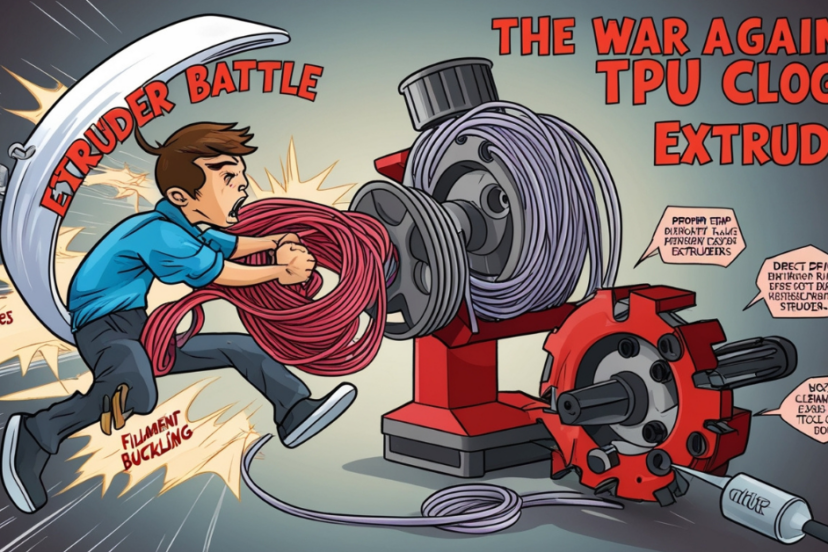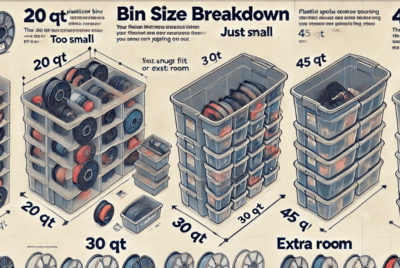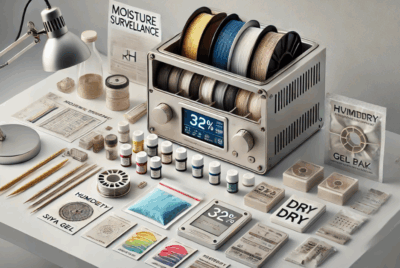How can I prevent TPU clogging?
Preventing TPU (Thermoplastic Polyurethane) filament from clogging during 3D printing is essential for smooth, high-quality prints. TPU is a flexible filament, which can cause problems like jamming or clogging if not handled correctly. Here are some effective ways to prevent TPU clogging:
1. Use a Direct Drive Extruder
- Why It Helps: TPU is a flexible material that can bend, causing jams and blockages, especially when used with a Bowden extruder. A direct drive extruder places the extruder motor directly on the hotend, reducing the distance the filament travels and minimizing friction.
- Solution: If your printer uses a Bowden extruder, consider upgrading to a direct drive extruder to prevent bending and improve filament control.
2. Reduce Retraction Distance and Speed
- Why It Helps: Retraction helps reduce stringing, but with TPU, too much retraction can lead to clogs, as the flexible filament can buckle in the extruder.
- Solution:
- Set the retraction distance to 1mm to 3mm (lower than for rigid filaments like PLA).
- Set the retraction speed to 20mm/s to 40mm to avoid pulling the filament too quickly and causing jams.
- Benefit: This helps maintain smooth extrusion and reduces the chances of clogging.
3. Maintain Proper Extruder Temperature
- Why It Helps: Printing at too low a temperature can cause under-extrusion, leading to clogs, while too high a temperature can cause oozing and inconsistent extrusion.
- Solution:
- Set the print temperature between 210°C to 230°C depending on the TPU brand you’re using.
- If you notice under-extrusion, try increasing the temperature slightly (5°C at a time).
- Benefit: Ensures smooth and consistent flow of the filament through the hotend.
4. Keep the Hotend Clean
- Why It Helps: Residual filament or dust in the hotend can lead to blockages. TPU filament can also accumulate and harden inside the nozzle.
- Solution:
- Clean the hotend nozzle regularly using a nozzle cleaning needle or perform a cold pull (also known as “atomic pull”) to clear any clogs.
- Use cleaning filaments designed for clearing out hotends if you notice recurring issues.
- Benefit: Prevents filament buildup in the nozzle, ensuring continuous and smooth extrusion.
5. Store TPU Properly to Avoid Moisture
- Why It Helps: TPU filament can absorb moisture from the air, which can lead to bubbling, inconsistent extrusion, and clogging.
- Solution:
- Store TPU filament in airtight containers with desiccants or vacuum-sealed bags to keep it dry.
- Dry TPU before printing if it has absorbed moisture. Use a filament dryer, oven, or food dehydrator (at 40°C to 50°C) for several hours.
- Benefit: Moisture-free filament ensures smooth extrusion and prevents clogging due to steam buildup inside the nozzle.
6. Ensure Proper Filament Feeding
- Why It Helps: TPU’s flexibility can cause it to bend and get stuck inside the extruder, leading to feeding problems and clogs.
- Solution:
- Use a spool holder that allows the TPU filament to unwind smoothly without too much tension.
- Ensure that the filament spool rotates freely and isn’t tangled.
- Benefit: Smooth feeding of TPU filament helps reduce the chances of jams and clogs in the extruder.
7. Optimize Flow Rate
- Why It Helps: If the flow rate is too high, the extruder may push too much filament through the nozzle, leading to clogs or over-extrusion.
- Solution: Set the flow rate to around 95% to 105%. If you notice under-extrusion or inconsistent extrusion, adjust the flow rate accordingly.
- Benefit: A properly adjusted flow rate ensures the right amount of filament is extruded without overloading the nozzle.
8. Avoid Using Bowden Tubes (If Possible)
- Why It Helps: Bowden tubes can introduce friction, especially with flexible filaments like TPU. This can cause the filament to buckle or jam inside the tube.
- Solution: If you are using a Bowden extruder, consider switching to a direct drive extruder for better control over flexible filaments like TPU.
- Benefit: Direct drive extruders are more reliable for printing flexible filaments and prevent issues with filament buckling.
9. Use a Larger Nozzle Size
- Why It Helps: TPU filament is flexible and can be difficult to push through small nozzles. Using a larger nozzle size can reduce the chances of clogging.
- Solution: Use a 0.6mm or 0.8mm nozzle for TPU to allow a smoother flow of material, especially for larger prints or thicker layers.
- Benefit: Larger nozzles provide more space for TPU to flow freely, reducing the chances of jams or clogs.
10. Use High-Quality TPU Filament
- Why It Helps: Low-quality TPU filament can have impurities, inconsistent diameters, or other defects that make it more prone to clogging and printing issues.
- Solution: Purchase high-quality TPU filament from reputable brands known for consistent quality and diameter.
- Benefit: Higher-quality filament will provide smoother extrusion and less likelihood of clogging or jamming during printing.
Summary:
To prevent TPU filament from clogging, use a direct drive extruder, optimize retraction settings, and maintain a proper extruder temperature. Regularly clean the hotend, store TPU in moisture-free conditions, and ensure smooth filament feeding. Adjust the flow rate, consider using a larger nozzle size, and opt for high-quality filament for the best results. By following these steps, you can significantly reduce the risk of clogging and ensure smooth, successful prints with TPU.




